Backlinks are one of the most important ranking factors in Google’s algorithm. If you want to improve your SEO and climb higher in search results, you need to build and manage your backlinks effectively. But how to find backlinks on Google? How can you tell which websites are linking to you or to your competitors?
The article below will walk you through everything you need to know, like what backlinks are and why they matter, and how to find them on Google using simple techniques. Let’s dive in and explore!

How to find backlinks on Google
Key Takeaways
|
What Are Backlinks and Why Do They Matter for SEO?
A backlink, also known as an inbound link or a link pointing to your site, occurs when one website includes a link directing users to another.
From an SEO (Search Engine Optimization) perspective, backlinks are a crucial ranking factor. Google and other search engines see backlinks as indicators of a website’s popularity and the quality of its content.
So, in simple terms, Backlinks are like votes of trust from one website to another. When a website links to your website, it means your content is valuable and trustworthy.
A website with many backlinks from reputable and relevant websites is more likely to rank higher in search results. The backlinks signal to search engines that other websites trust the information presented on your site.
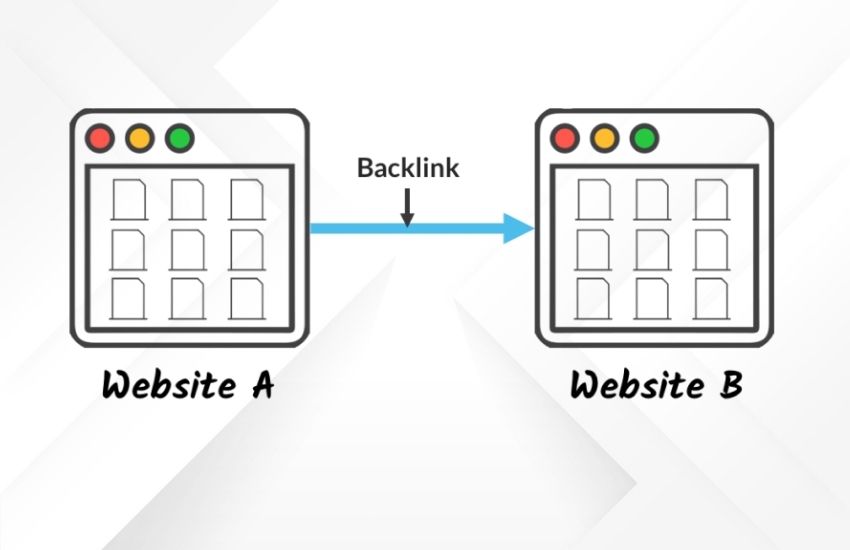
A backlink is when another website includes a link that directs users to your website
Some key factors that make a backlink valuable and trustworthy:
- Authority of the linking website: Backlinks from authoritative websites with strong domain authority or rating hold more value than those from new or less reputable sites.
- Relevance of the linking website: A backlink from a website that is relevant to your industry or niche is more valuable than a backlink from an unrelated website.
- Placement of the link: Links embedded naturally within the content of a page are more valuable than links in footers, sidebars, or comment sections.
- Anchor text of the link: Anchor text is the clickable part of a link. When relevant and clear, it helps search engines understand the linked page. However, over-optimization or exact-match text can seem manipulative.
- “Dofollow” attribute: Dofollow links pass on link value and are therefore more valuable for ranking purposes.
- Uniqueness of the linking domain: Multiple backlinks from one website are less valuable than backlinks from various websites. Getting links from authoritative and relevant domains is key to a strong backlink profile.
Understanding the importance and nuances of backlinks is the first step in building a successful SEO strategy. Now, let’s explore how to find backlinks on Google.
How to Find Backlinks on Google? 7 Proven Ways In 2025
Here are 7 beginner-friendly ways to find backlinks on Google and grow your link profile:
1. Use Search Operators to Uncover Hidden Backlink Opportunities
Google search operators are special commands that help you filter search results in clever ways. Try these queries:
- intitle:[keywords]
- intitle:[keywords] site:[site you want to place your links]
These queries often bring up curated resource pages, blog posts with link roundups, and other valuable backlink targets. A smart way to start Google backlinks search without needing any paid tools.
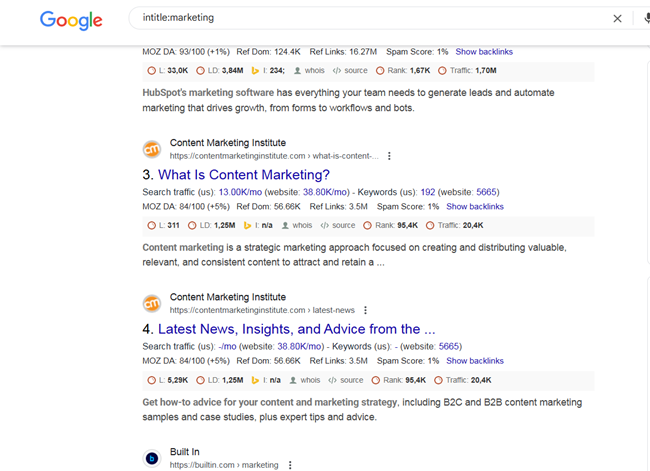
Use search operators to uncover hidden Backlink opportunities
2. Find Backlinks Pointing to Your Own Website
Wondering how to discover backlinks for my website? Start by using a simple trick:
- Search for: link:yourdomain.com
Although it doesn’t show all backlinks, it gives you a quick idea of who’s linking to you. For more comprehensive results, use Google Search Console or backlink analysis tools like Ahrefs or SEMrush.
You can also check for specific pages by typing: “yourdomain.com” – site:yourdomain.com. It helps you see who mentions your site outside of your domain.
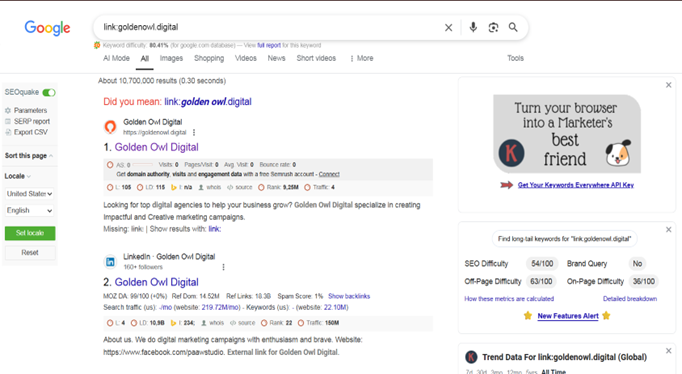
How to find backlinks pointing to your website
3. Analyze Competitor Backlinks for New Link-Building Targets
Free Method: Check Top 100 Backlinks
Use Ahrefs Free Backlink Checker by entering your competitor’s URL to see the total number of backlinks, referring domains, and the top 100 backlinks (including the referring page, anchor text, and target URL)
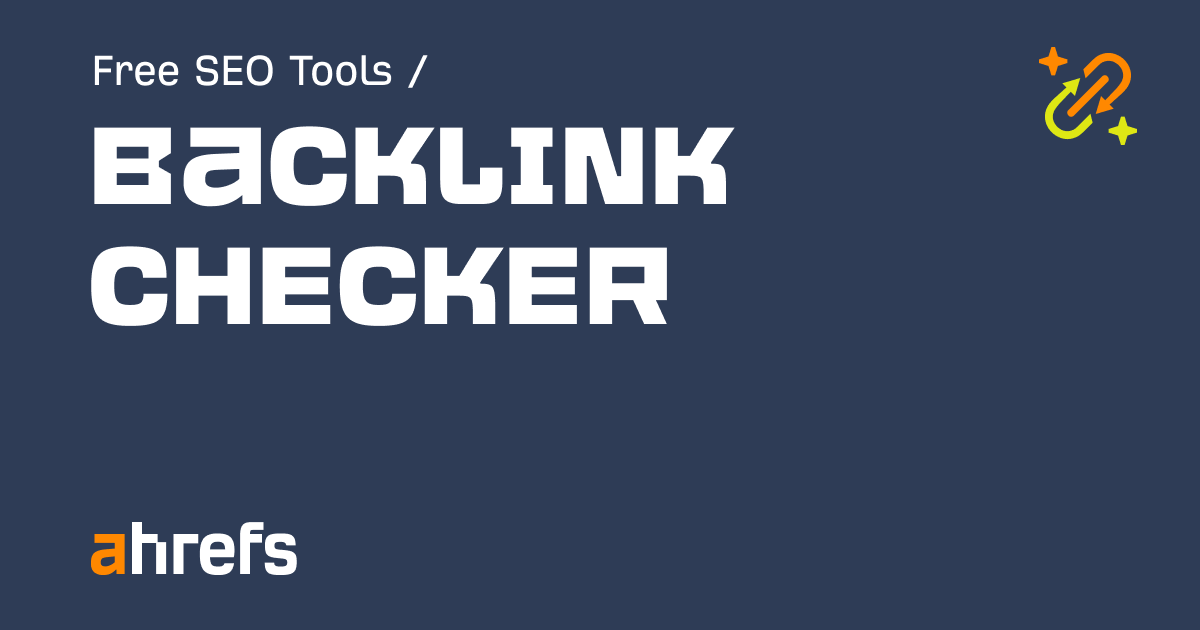
Use free method to see top 100 backlinks (source: Ahrefs)
Paid Method: View All Backlinks with Ahrefs
With Ahrefs’ paid version, go to Site Explorer to see all of your competitors’ backlinks. You can filter them by link quality, traffic, or the authority of the referring pages.

Using the paid method can see more than 80,000 backlinks (source: Ahrefs)
After gathering your backlink data, it’s important to assess link quality. Be sure to read our article on What fake backlinks are to understand which links might be damaging your site’s SEO and how to handle them
4. Discover Broken Links on Authority Sites and Offer Your Content
Broken link building is a smart and scalable strategy to earn high-quality backlinks. Here’s how to do it using Ahrefs:
- Identify broken outbound links on authority sites: Use the tool to scan for broken outbound links and prioritize pages related to your niche.
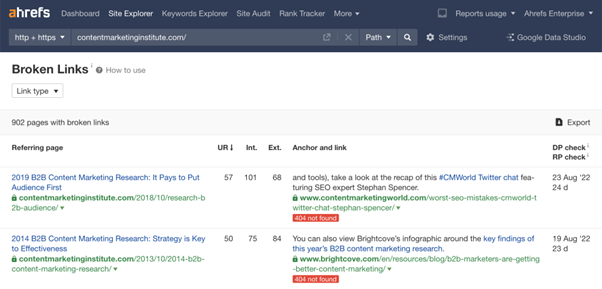
Identify broken outgoing links on authoritative websites (source: Ahrefs)
- Reclaim link equity: Find deleted pages that previously had many backlinks and create replacement content to suggest link updates.
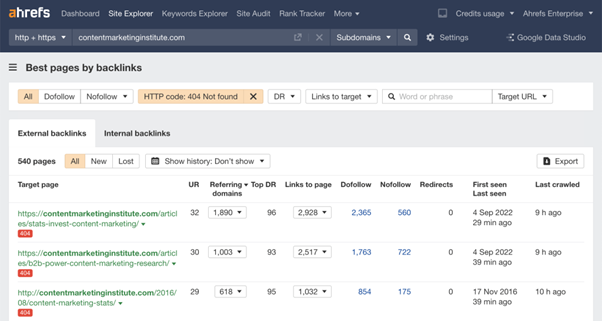
Reopen your broken pages (source: Ahrefs)
- Fix internal broken links: Audit and either fix or redirect internal pages that are linked from elsewhere on your site to improve user experience and crawlability.
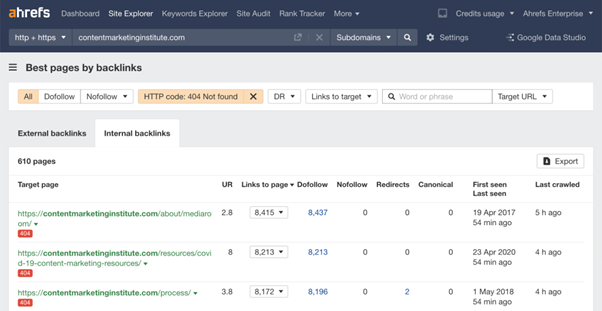
Remove broken internal links (source: Ahrefs)
- Schedule automatic checkups: Set up weekly or monthly scans to detect and fix new broken links promptly.
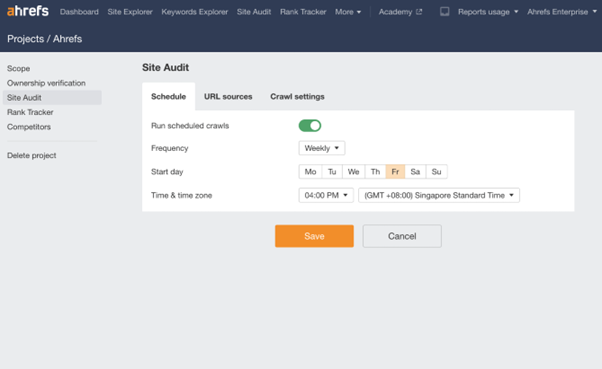
Schedule new broken link detection (source: Ahrefs)
- Find and handle broken redirects: Identify links pointing to unknown or misdirected domains and remove them to protect your SEO trust.
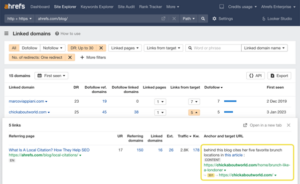
Find and fix broken redirects (source: Ahrefs)
- Turn competitors’ mistakes into opportunities: Analyze high-backlink broken pages from competitors and offer your alternative content.
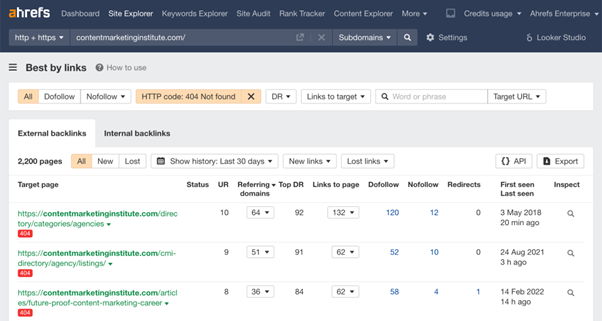
Build more links (source: Ahrefs)
- Export data and delegate with ease: Export full reports as CSVs in just two clicks and send them to your team or freelancer for fast execution.
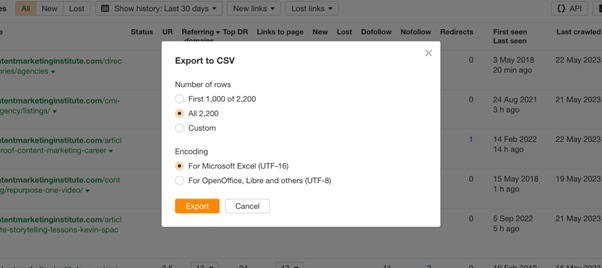
Get any Ahrefs report as CSV in seconds
5. Track Unlinked Brand Mentions Using Google Search and Alerts
Sometimes, websites might mention your brand name without linking back to your website. The unlinked brand mentions are potential backlink opportunities.
- Set up Google Alerts for your brand name: Go to Google Alerts and create an alert for your brand name. You’ll receive email notifications whenever your brand is mentioned on the web.
- Regularly monitor search results for your brand name: Periodically perform Google searches for your brand name (e.g., “Your Brand Name”).
- Identify unlinked mentions: When you find a website mentioning your brand without a link, reach out to the website owner and suggest adding a link to your website.
One of the easiest ways to check backlinks on Google and claim new ones.. While tools like Google Search Console are great for tracking your existing backlinks, do you know that social bookmarking is another effective technique to help you expand your link-building efforts.
6. Identify Guest Posting Opportunities with Advanced Queries
Guest posting means writing an article for another website in your niche, and in return, you get to include a link back to your website, usually in the author bio or within the content.
Find guest post opportunities by searching on Google with phrases like:
- “write for us” + keyword
- inurl:guest-post + keyword
- “guest post guidelines” + keyword
- “submit a guest post” + keyword
Read the guest post guidelines: Check what kind of content they accept, who their audience is, and their rules about links.
Pitch relevant content ideas: Suggest high-quality article ideas that fit their website and match your expertise.
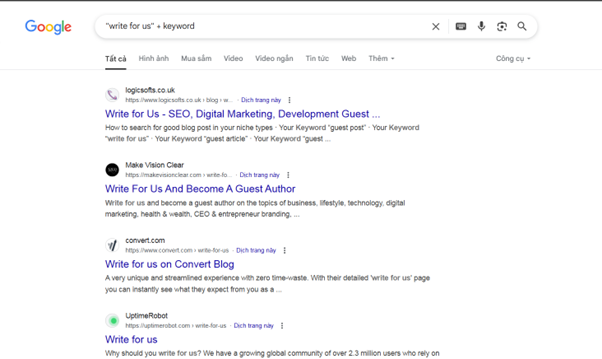
Guest posting helps you earn quality backlinks, build your brand, and increase your credibility in your field.
How to Check and Evaluate Your Backlinks
Finding backlinks is only the first step. Next, you need to check their quality and make sure they’re helping your SEO.
Use Google Search Console to Monitor Your Backlinks
Google Search Console is a free tool that helps you see which websites are linking to yours:
- Regularly review the “Links” report: Check the “External Links” section to see new referring domains and how your backlink profile grows over time.
- Identify top linking sites and most linked content: Helps you understand which websites link to you most often and what content attracts the most backlinks, valuable for replicating success.
- Monitor anchor text: While relevant anchor text is good, an unusual concentration of exact-match anchors could raise red flags for Google.
- Disavow unwanted links: If you find spammy or low-quality backlinks, use the Google Disavow Tool to tell Google not to factor them into your website’s ranking.
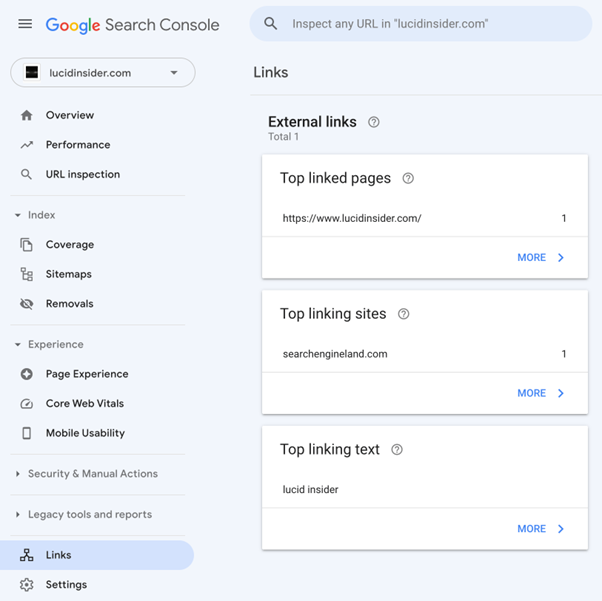
Google Search Console is a free tool that can monitor backlinks
Check Whether Backlinks Are Indexed
A backlink only provides value if Google knows about it, meaning the linking page must be indexed. To fully understand how to find backlinks on Google that are effective, check for indexation:
- Manually check a few backlinks: Copy the URL of the linking page and search on Google using format: site:thelinkingpage.com/page-url. If it appears in search results, it’s indexed.
- Use third-party SEO tools: Can also submit the linking page’s URL to Google’s URL Inspection Tool to speed up indexing.
Identify Spammy or Toxic Links to Disavow
Sometimes, your site may receive links from unrelated or low-quality sites. The toxic backlinks can harm your rankings. Signs of a harmful backlink include:
- Links from irrelevant websites: If the linking site has nothing to do with your niche or industry.
- Links from spammy or low-authority sites: Especially those with thin content, auto-generated content, or known link schemes.
- Over-optimized or unnatural anchor text: A large number of backlinks using the exact same keyword as anchor text may look suspicious to Google.
- Links from foreign-language sites: A sudden spike in backlinks from unrelated language regions can be a red flag.
- Links from penalized domains: If the linking domain has been penalized by Google, its link to you could do more harm than good.
Use Google Search Console along with third-party backlink analysis tools to detect potentially harmful links. Once identified, can use the Google Disavow Tool to prevent them from affecting your SEO.

Identify spammy links to avoid harm to rankings
Leverage Backlink Checker Tools for Deeper Insights
Google Search Console is an essential tool for understanding how to find backlinks on Google. Additionally, dedicated backlink tools, both free and paid, offer deeper analysis and uncover more backlinks.
- Ahrefs: A powerful and comprehensive tool with detailed backlink data, competitor insights, and link health analysis.
- SEMrush: An all-in-one SEO platform with strong backlink audit features, authority scoring, toxic link detection, and competitor tracking.
- Moz Link Explorer: Offers Domain Authority (DA), Page Authority (PA), link metrics, and competitor comparison features.
- Majestic: Known for its Trust Flow and Citation Flow metrics, helpful in evaluating link quality and quantity.
- Ubersuggest (by Neil Patel): Provides a free plan with basic backlink data and more advanced features in paid versions.
Conclusions
Backlinks are still a crucial factor in SEO success. To grow a sustainable website, you need to learn how to find backlinks on Google, evaluate them, and manage your backlink profile effectively.
By using Google search techniques, smart outreach, and powerful analysis tools, you can build a strong backlink profile that improves rankings over time. Focus on quality over quantity, follow Google’s guidelines, and maintain consistency to achieve meaningful results.
If you want to elevate your SEO strategy and build a more effective website, contact GO Digital – your trusted SEO Outsourcing Service. We provide cost-effective solutions, measurable performance, and allow you to focus on growing your business.







